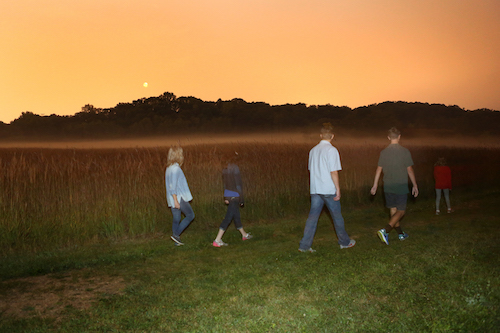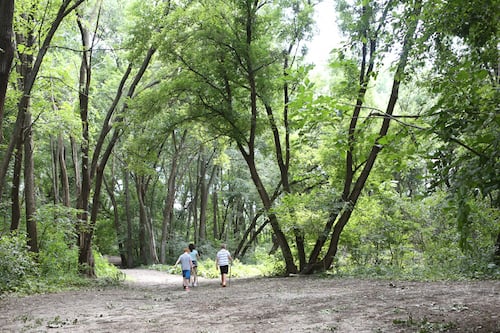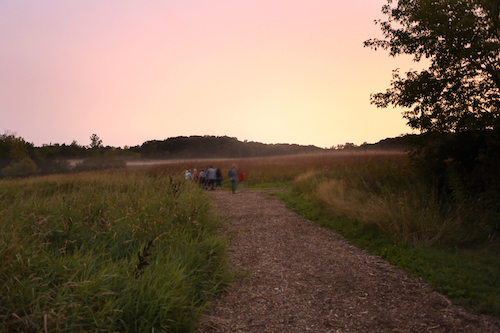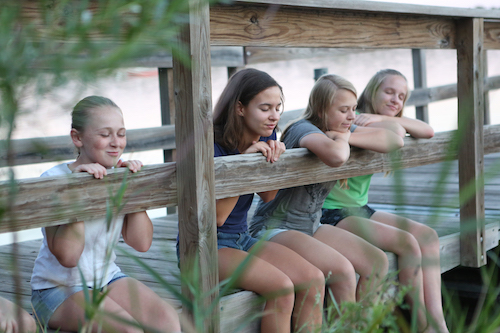Whether you’re sitting quietly in your own backyard, or hiking through a park, the world sounds different at night. Fall is the perfect time of year to take young explorers on a evening nature adventure. They’ll be amazed at the way their senses move into high gear as darkness falls and they wait for night vision to kick in.
What You’ll Need
- Comfortable shoes
- Weather-appropriate clothing
- Insect repellent
- Flashlights (optional)
Tips for a Successful Walk
- Set out around twilight.
- Walk in a group and dress for the weather.
- If possible, take your walk on a night when the moon is full, or almost full.
- Bring flashlights, but keep them off unless you need them.
- Hike in an area you know well and stay on the path, or go with a nature guide.
What to Do

Step 1: Plan your excursion. Will you be walking in a meadow, on a seashore, or in a forest? What season is it? Research which animals you might see and hear at night. Look at a star map or a star app to find out what constellations you might spot. Check what time the sun will set.
Step 2: If it’s tick or mosquito season, apply bug spray. Dress for the weather. It will get cooler when the sun goes down.

Step 3: Gather your group and hit the trail around twilight (a little before sunset).

Step 4: Walk quietly and stop frequently to listen. Once the sun goes down, it can take half an hour for your eyes to completely adjust to the dark. Do night sounds change as it gets darker?
Step 5: In summer and warmer climates, listen for crickets. Ask your kids to count how many chirps they hear in 14 seconds and add 40 to get the temperature in Fahrenheit. To calculate the temperature in Celsius, count the chirps in 25 seconds, divide by 3 and add 4. It should be pretty close!

Step 6: Ask your group to close their eyes and breathe in through their noses. Ask them: Does the air smell different at night? What do you smell?
Step 7: Look at the stars. Can you find the Big Dipper or the North Star?
Step 8: Listen for frogs and other animals. See how many different creature calls your kids can hear.
The Science Behind the Fun

The world changes at night. In the dark, your eyes undergo chemical changes to help you see. Songbirds fall silent, hidden animals emerge, and a nocturnal choir bursts into song. Our sense of hearing, smell, and even touch are heightened in dim light.
Besides being musicians, crickets are cold-blooded thermometers who take on the temperature of their surroundings. Temperature determines how fast they can chirp, and only male crickets make this sound, to attract mates and tell other males to stay away. They chirp by rubbing the saw-like edge of one wing against their other wing. Crickets usually stop fiddling once the temperature drops below 55°F, so you won’t hear them if it’s too cold.
You can find more activities like this one at kitchenpantryscientist.com, and in my books Kitchen Science Lab for Kids (Quarry Books) and Outdoor Science Lab for Kids (Quarry Books).
© Quarry Books, 2016/Outdoor Science Lab for Kids
Featured Photos Credit: © Quarry Books

